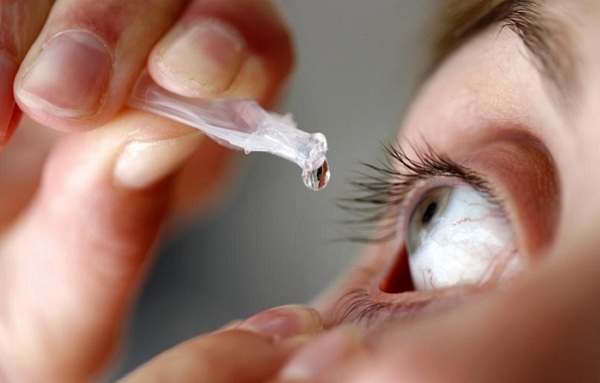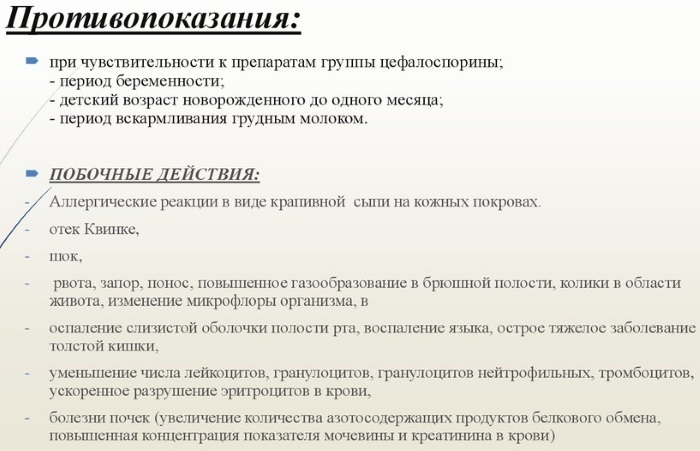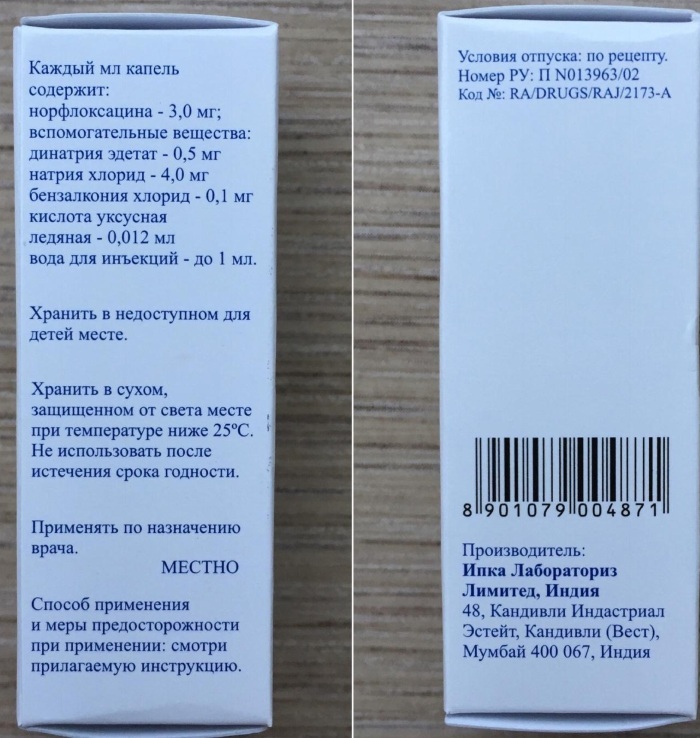An antibiotic is a remedy prescribed for serious dental diseases, infectious gum disease, or bone damage. Individual drugs in this group are prescribed for different indications, but they are all associated with the multiplication of bacteria in the oral cavity and tissues.
WITH common inflammations are treated with antiseptics and hygiene procedures. Antibiotics are used as a last resort, if it is impossible to stop or prevent the spread of bacterial infection by other methods.
Record content:
- 1 Classification
-
2 Top 10 drugs from the pharmacy
- 2.1 Amoxicillin
- 2.2 Amoxiclav (Augmentin)
- 2.3 Ampiox (Oxamp)
- 2.4 Azithromycin (Sumamed)
- 2.5 Ceftriaxone
- 2.6 Lincomycin
- 2.7 Clindamycin
- 2.8 Doxycycline
- 2.9 Tsiprolet
- 2.10 Moxifloxacin
- 3 Video about antibiotics for gums
Classification
To eliminate infections in the oral cavity and maxillofacial area, antibiotics are used to restrain growth and reproduction of pathogens (bacteriostatic) or killing infectious microorganisms (bactericidal). These types of drugs have a different spectrum of action and are not combined with each other when taken simultaneously.
It is preferable to use a single broad-spectrum antibiotic for treatment, providing the most complete coverage of possible pathogens. For an accurate effect, it is desirable to conduct an analysis and accurately determine the pathogen.
But even a correctly selected combination of drugs is not able to completely solve the problem without eliminating the focus of infection. Therefore, antibiotic therapy is only part of a comprehensive treatment, and not an independent therapy.
The use of antibiotics in dental practice is a forced and necessary measure in such conditions:
- purulent inflammation of the tooth root with swelling of the gums and face (gumboil);
- infectious inflammation of the gums (periodontitis);
- acute or chronic inflammation of soft and bone tissues with bleeding, the presence of ulcers and erosions on the mucous membranes;
- recovery period after large-scale surgery;
- cases of suppuration after dental implantation.
For different dental problems, completely different antibiotics are effective. Inflammation and purulent processes in the oral cavity, gums, bone tissue are most often caused by concomitant infections.
Aerobic and anaerobic microorganisms of different types are sensitive to different groups of antibiotics. The drugs, in turn, have differences in the method of exposure, places of localization and the ability of bacteria to adapt to them.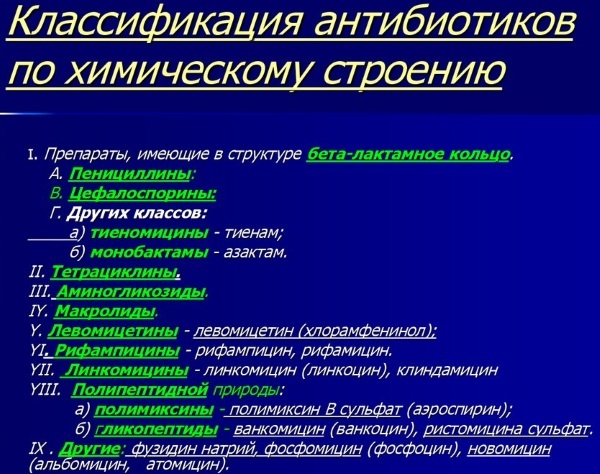
| Antibiotic group | The drugs used | Features of the impact | Indications for appointment |
| Penicillins | Amoxicillin, Amoxiclav, Flemoklav, Arlet |
They are well tolerated by patients, have few contraindications and side effects, and may be prescribed for children, the elderly, and pregnant women. | Any inflammation of an infectious nature, prevention of sepsis before surgical treatment, infectious complications after implantation or tooth extraction |
| Cephalosporins | Tsifran, Tsiprolet |
Influences pathogens resistant to penicillin and tetracyclines; destroy active and dormant bacteria. | Purulent inflammation, mixed aerobic-anaerobic infections, periodontitis, periostitis, abscess |
| Lincosamides | Lincomycin, Clindamycin |
They have a narrow spectrum of activity, accumulate in bone tissue, preventing the spread of infection. | Osteomyelitis, ulcerative gingivitis, flux, fistulas, inflammation of bone tissue, periodontitis, prevention or treatment of infectious surgical complications |
| Fluoroquinolones | Nolitsin, Siflox, Tsiprolet A, Ciprofloxacin, Moxifloxacin |
They have strong antimicrobial and anti-inflammatory properties; resistance rarely develops. | Advanced forms of periodontitis, suppuration under dentures or crowns, cases of insensitivity to other antibiotics |
| Tetracyclines | Metacyclin, Doxycycline |
They are not used for prophylaxis; with prolonged treatment, tooth enamel turns yellow and deteriorates, bone tissues and periosteum are destroyed. | Generalized periodontitis, osteomyelitis, gonorrheal stomatitis, ulcerative and burn injuries of the mucous membranes, soft tissue infections |
Some diseases that are not related to the dental profile require prophylactic antibiotics before dental treatment, plaque removal, any surgical interventions in the oral cavity.
Among these pathologies are:
- heart disease;
- heart failure;
- endocarditis, infectious arthritis;
- the presence of pacemakers, artificial valves, joint prostheses.
In such cases, it is imperative that sepsis is prevented by prescribing an antibiotic a few hours before and immediately after visiting the dentist. This measure prevents the development of bacterial endocarditis in patients at risk.
Top 10 drugs from the pharmacy
An antibiotic for inflammation of the gums is selected according to many criteria: the speed of exposure, the spectrum of antibacterial activity, the presence of individual contraindications, and a tendency to allergies. There are old, proven remedies with a small list of side effects and new generation drugs to which bacteria have not yet developed resistance.
Each case requires individual selection:
- Lincosamides are considered classic "dental" antibiotics. Their ability to easily penetrate into all tissues, accumulate in the periosteum and bones make them the drug of choice in the treatment of bacterial inflammation of the oral cavity.
- Penicillins have the least side effects and contraindications, and are usually well tolerated by patients of all ages. But modern bacteria often already have immunity to them.
- Fluoroquinolones of the latest generations are gaining more and more confidence among dentists, due to the wide range of bacteria susceptible to them and the rare cases of resistance (resistance) to treatment.
- Tetracyclines are used only with selective sensitivity of individual strains. Their side effects are damaging to the teeth and jaw tissues.
The method of injecting antibiotics directly into the gums is today recognized as dangerous and does not justify the risks. If an urgent action of the drug is necessary, it is administered intravenously or intramuscularly. In cases that do not require immediate relief, use tablet forms or capsules.
Amoxicillin
The drug is often used to treat bacterial inflammation of the oral cavity, prevent endocarditis. An antibiotic from the group of semi-synthetic penicillins relieves inflammation well, prevents secondary infections. Has a bactericidal effect on a wide range of aerobic bacteria. The drug is applicable in pediatrics and for pregnant women.
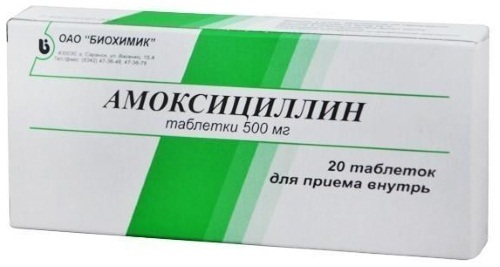
The agent is produced in the form of tablets or capsules with an active ingredient content of 250 and 500 mg. The drug is taken orally before or after a meal according to the prescribed scheme with interruptions of no more than 8 hours.
Features of the appointment of Amoxicillin:
- For adults, as well as children (with a body weight of more than 40 kg), a single dose of the drug is 500 mg. Prescribe 3-4 doses per day for a period of 5 to 10 days.
- In severe conditions, a single dose can be increased to 1 g, the total amount should not be more than 6 g per day.
- Children are prescribed amoxicillin at a dosage of 250 mg according to the same scheme. For patients under 3 years of age, the form of the drug is provided in the form of granules, for the preparation of a suspension.
- For the prevention of postoperative complications, one dose of antibiotic is prescribed 30 minutes before dental manipulation (or within the next 3 hours after): adults in the amount of 2 g, children - 0.5 g per dose.
The cost of a pack of amoxicillin (250 mg) of 16 capsules does not exceed 100 rubles. Tablet forms can be purchased for about 60 rubles. per packing.
Amoxiclav (Augmentin)
The drug is a combination of amoxicillin and clavulanic acid. Refers to inhibitor-protected penicillins. The additional substance provides the antibiotic effect on pathogen strains protected by beta-lactamases and resistant to amoxicillin. This significantly expands the spectrum of action of the drug.
An antibiotic for inflammation of the gums is prescribed according to the same scheme, with the same indications as amoxicillin, recalculating the amount per active ingredient. The combined agent is often used by dentists due to its non-toxicity and the rare occurrence of side effects.
The main complaints of patients arising from prolonged use of the drug:
- nausea, indigestion, or constipation;
- reversible changes in the blood formula;
- dysbiosis, intestinal colic;
- allergic reactions;
- candidiasis.
The drug is produced in the form of tablets with the following composition: 250 (500 or 875 mg) amoxicillin + 125 mg clavulanic acid. The peculiarity of taking Amoxiclav is that high-dosage tablets are taken less often, up to 2 times a day. The cost of the medicine varies from 200 to 800 rubles. depending on dosage and country of origin.
Ampiox (Oxamp)
Combined preparation of ampicillin and oxacillin (125 mg + 125 mg), belonging to the group of semi-synthetic penicillins. Has a complex, enhanced effect, in a short time heals periostitis, flux, is applicable for severe infections with the danger of sepsis.
The drug has few contraindications: lymphocytic leukemia, mononucleosis, individual intolerance. The possibility of prescribing during pregnancy is determined after evaluating the ratio of the expected benefits and possible harm. The drug is contraindicated in lactation. Excess doses threaten with toxic effects on the central nervous system.
For adults and children after 14 years of age, a single dose does not exceed 1 g, the daily dose is 4 g. For a child under 14 years of age, the amount of the drug is calculated based on body weight. The course of treatment lasts at least 5 days. According to indications, therapy can be continued for up to 2 weeks. Ampiox pack with 20 tablets (250 mg) costs an average of 60 rubles.
Azithromycin (Sumamed)
Antibiotic bacteriostatic action from the group of macrolides-azalides. The drug inhibits the growth and reproduction of a wide range of bacteria (gram-negative, gram-positive, anaerobes, intracellular). The advantage of Azithromycin is that it can be taken once every 24 hours. The usual course of treatment lasts 3 days.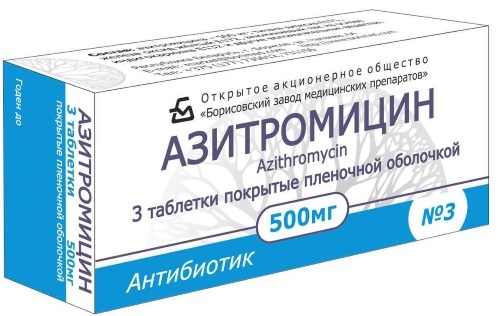
The antibiotic has the following side effects:
- dizziness, drowsiness, insomnia, nervousness;
- tinnitus, hearing loss (reversible), foreign tastes, odors;
- tachycardia, arrhythmia, changes in the QT interval on the cardiogram;
- nausea, abnormalities in the gastrointestinal tract (constipation or diarrhea), jaundice, hepatic or renal failure, liver necrosis;
- allergic reactions, sensitivity to ultraviolet radiation, tissue necrosis;
- nephritis, vaginitis, candidiasis.
The drug is not used in the treatment of children, pregnant women, as well as lactating women. The most popular form of the drug is a gelatin-coated capsule that dissolves in the intestine. The dosage of the active ingredient is 250 or 500 mg. For special indications, it is possible to take 2 capsules per day. The cost of a package of Azithromycin (500) with 3 capsules is from 70 to 120 rubles.
Ceftriaxone
The drug of the 3-generation cephalosporin group exists only in injectable form and is used mainly in stationary conditions. Suppresses enterobacteria, streptococcal flora, which allows you to quickly cope with severe purulent lesions of the soft or bone tissues of the maxillofacial region. The drug is effective when the infection is resistant to other groups of antibiotics.
Ceftriaxone is not the drug of choice for common root inflammation or suppuration. Treatment with this antibiotic is carried out for severe infections and critical conditions.
Reasons for prescribing Ceftriaxone:
- complex forms of abscesses;
- odontogenic sepsis;
- phlegmon.
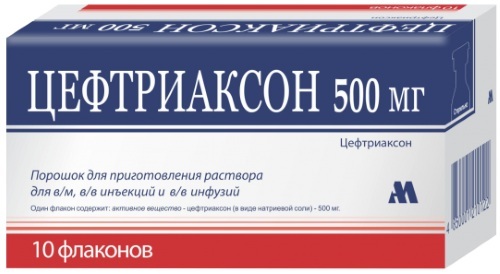
An antibiotic for severe purulent inflammation of the gums is administered intravenously in combination with novocaine. Side effects are noted extremely rarely, the main contraindication to the appointment is an allergy to antibiotics, cephalosporins. Use with caution during pregnancy and lactation. Research in this area is insufficient, sometimes the development of candidiasis in newborns is noted.
Lincomycin
An antibiotic with bacteriostatic properties, suppresses most gram-positive pathogens, but is not effective against gram-negative ones. Therefore, they are often prescribed with fluoroquinolones or aminoglycosides.
Indications for the appointment of Lincomycin:
- inflammation of the periosteum, bone;
- purulent processes in the root of the tooth (including under the prosthesis);
- inflammation after implantation or tooth extraction;
- flux, abscess, purulent cysts.
Lincomycin is a traditional dental antibiotic due to its ability to concentrate and accumulate in bone tissue. Its dosage is selected individually, depending on the severity of the process. Usually, 500 mg is used 3 times a day, the maximum amount is 6 g per day.
An antibiotic is not prescribed for such conditions:
- allergy;
- diabetes;
- renal or hepatic impairment;
- children under 12 years of age (tablet forms);
- pregnancy and breastfeeding;
- the danger of a fungal infection;
The drug is available in 3 forms: tablets of 20 pcs. in a package (70 rubles), injection solution 10 ampoules (about 150 rubles), ointment 15 g - 90 rubles. The injectable form is preferable for use and is allowed under the supervision of a physician from one month of age. In this form, the drug does not affect the work of the gastrointestinal tract.
Clindamycin
An antibiotic that has a bacteriostatic effect against gum disease. By action and indications, it repeats Lincomycin, but has a stronger antimicrobial effect. Clindamycin is essentially an improved lincosamide, for the targeted elimination of anaerobic pathogenic flora in diseases of the oral cavity, teeth, gums.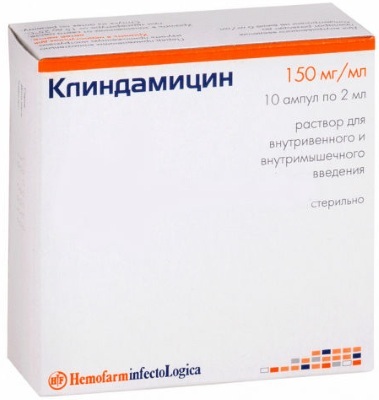
Clindamycin is used for one-time prophylaxis of septic complications during dental procedures, tooth extraction, if penicillin intolerance is identified. 30 minutes before the procedure, 600 mg is taken orally or 600 ml of the drug is administered intravenously. For children, the dose is reduced by 3 times.
For the course treatment of purulent lesions, capsules of 150 mg are used (150-200 rubles. for 16 pieces) or injection solutions of 2 ml (about 500 rubles. for 10 pcs.). Adults are prescribed 2 capsules or 2 injections per day for 10 days. In severe conditions, the dosage is doubled.
The maximum amount of the drug for children over 6 years old is 600 mg per day, divided into 4 doses. For a young child, the concentration is calculated individually by weight. Clandimycin can cause adverse reactions from the hematopoietic, cardiovascular and digestive systems.
Do not prescribe the drug for such conditions:
- hepatic or renal impairment;
- pregnancy, lactation period;
- elderly age;
- bronchial asthma;
- individual intolerance.
Any drugs of the lincosamide group are taken on an empty stomach 30 minutes before a meal.
Doxycycline
A powerful antibiotic with a broad spectrum of bacteriostatic action. Active against gram-positive, gram-negative pathogens, some viruses and protozoa.
Resistance of bacteria to the drug develops slowly. Doxycycline is considered the least toxic of the tetracycline antibiotics; it is absorbed in the body by almost 100%. Its use is possible both in monotherapy and in combination with other drugs.
The drug is used in dentistry to treat any purulent processes in the oral cavity, soft tissues, bones. Doxycycline can disrupt the digestive tract, therefore, to minimize the effects, it is taken with meals. Taking the drug can cause many side effects, including osteomalacia (damage to the tissues of the teeth or jaw), darkening of the enamel, and slowing of the growth of bone tissue.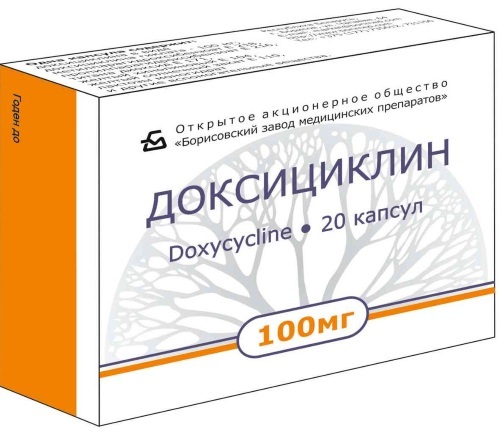
The main contraindications are:
- any stage of pregnancy;
- lactation period;
- children under 8 years old.
The dosage is determined in each case individually, therapy usually lasts from 3 to 7 days. The maximum daily dose is 600 mg. Usually, more than 200 mg per day is not prescribed. The price of 100 mg Doxycycline capsules starts at 22 rubles. for 10 pcs.
Tsiprolet
The antibiotic, with inflammation of the gums of bacterial origin, is capable of destroying both growing, multiplying pathogens and microorganisms in the resting phase.
A fluoroquinolone antibiotic based on ciprofloxacin has good bactericidal and antibacterial properties. properties against all gram-negative and positive bacteria, except for anaerobic gram-negative microorganisms and spirochetes.
The bactericidal effect of a drug from the group of fluoroquinolones is based on blocking bacterial DNA. The drug destroys beta-lactam bacteria, as well as microorganisms resistant to tetracyclines, aminoglycosides. It is often used for unspecified bacterial lesions, flux, purulent processes in the bone tissue or the roots of the teeth under the crowns.
Tsiprolet has a wide field of action in dentistry and is used for the following diseases:
- periostitis;
- periodontitis;
- abscesses;
- other suppurations.
The tool quickly eliminates infections, relieves inflammation, and can eliminate pain. The drug rarely shows side effects, does not destroy the microflora of the gastrointestinal tract and vagina. The action lasts up to 5 hours.
The tool is used only for adults, it is not recommended for adolescents and children because of the adverse effects on growing joints. Do not use during pregnancy or lactation. During treatment, dairy products are prohibited, as well as taking supplements with iron, calcium, magnesium.
Tsiprolet is released in tablets with an active ingredient content of 500 mg. Usually prescribed for admission 2 times a day for a week. The cost of a package with 10 tablets starts at 110 rubles.
Moxifloxacin
This is a 4th generation fluoroquinolone preparation, which requires the lowest concentration of all existing analogues for its antimicrobial action. The antibiotic is active against most odontogenic infections, surpassing the potency of lincomycin and metronidazole. 80% of detected bacterial infections of the oral cavity are sensitive to Moxofloxacin therapy.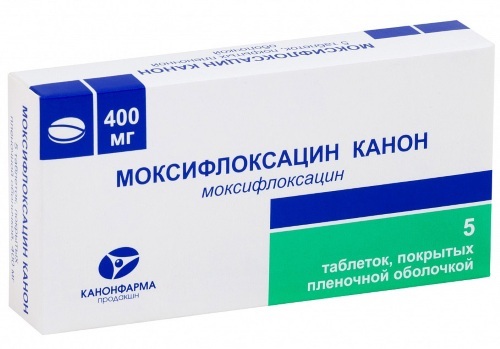
Features of the prescription of the drug:
- When carrying out antibiotic prophylaxis, the drug is used once in an amount of 400 mg a few hours before dental intervention.
- With complex surgical procedures, therapy is continued after surgery at 400 mg per day for at least 4 days.
- The indicated daily dose cannot be exceeded; only the duration of therapy can be increased. In complicated infections, the total duration of Moxifloxacin therapy can be up to 21 days.
- Do not prescribe the drug to pregnant women, patients with epilepsy, diseases of the central nervous system, until they reach 18 years of age.
Side effects include disorders of the gastrointestinal tract, headache, retardation of reactions, photosensitivity, and allergic manifestations. Moxifloxacin is produced in a dosage of 0.4 g, packaged in 5 tablets. The cost of the drug starts at 400 rubles. per packing.
An antibiotic for the treatment of inflammation of the gums, roots of teeth, soft and bone tissues should be selected by the dentist based on the picture of the pathological process, taking into account all contraindications. In pharmacies, drugs from these groups must be dispensed with a prescription.
But in fact, antibiotics are in free circulation, which often provokes self-prescription in case of acute toothache or the sudden appearance of a gumboil. Dentists advise in such conditions to limit the use of an anesthetic drug and consult a doctor as soon as possible.
Article design: Vladimir the Great
Video about antibiotics for gums
Antibiotics for the treatment of teeth and gums:

